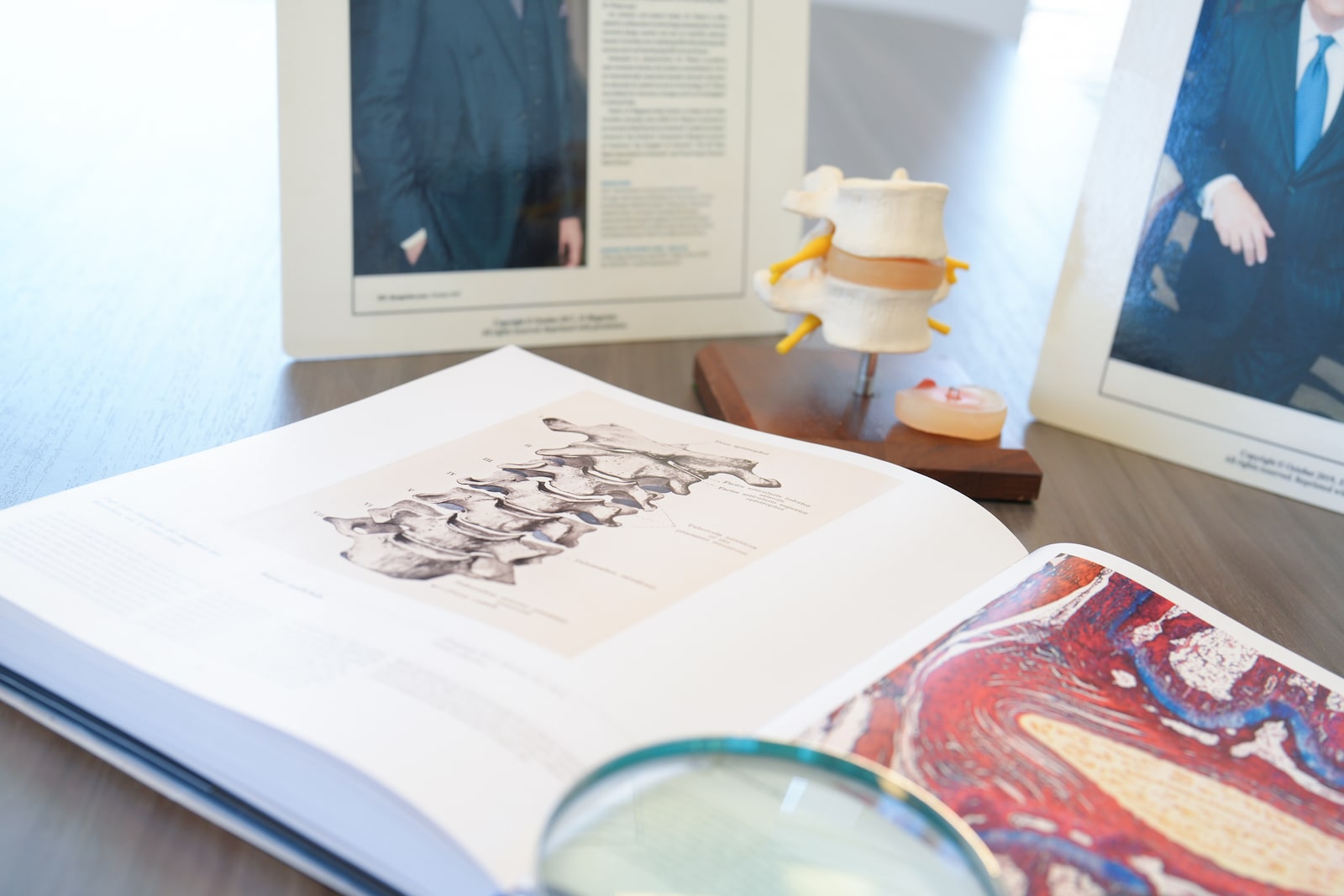What Is Motion-Preserving Spine Surgery? Advanced Care with Dr. John Peloza
Motion-preserving spine surgery is a revolutionary approach to treating spinal conditions that maintains the spine’s natural mobility. Motion-preserving spine surgery provides an alternative to traditional spinal fusion, allowing patients to retain flexibility and reduce the risk of adjacent segment degeneration. Dr. John Peloza, a renowned expert in minimally invasive spine surgery, leads the way in providing these cutting-edge procedures to patients seeking relief from chronic back pain and improved quality of life.
Understanding Motion-Preserving Spine Surgery
Traditional spinal fusion has long been the standard treatment for various spinal conditions, but it comes with potential drawbacks. Fusion eliminates motion between affected spinal segments, which can lead to accelerated degeneration of adjacent levels, a phenomenon known as adjacent segment disease. It also makes the back less mobile.
Motion-preserving techniques, on the other hand, treat spinal conditions while maintaining the spine’s natural mobility. Motion-preserving techniques include total disc replacement/artificial disc replacement, facet joint replacement, dynamic stabilization, and interspinous implants. In artificial disc replacement, for example, the damaged, pain-inducing disc is still removed (just like spinal fusion), but the spine is not fused. Rather, a mobile, artificial disc takes the damaged natural disc’s place.
Conditions Treated with Motion-Preserving Spine Surgery
Motion-preserving spine surgery treat patients suffering from chronic back pain, nerve compression, and limited mobility due to spinal disorders including:
- Degenerative disc disease: The natural breakdown of intervertebral discs in the spine due to aging and wear and tear
- Herniated disc: The soft inner material of a spinal disc pushes through a crack in the tougher outer layer
- Spinal stenosis: A narrowing of spaces within the spine, which can put pressure on the spinal cord and nerves
- Spondylolisthesis: Occurs when one vertebra slips forward over the vertebra below it
Benefits of Motion-Preserving Spine Surgery
Motion-preserving spine surgery offers several advantages over traditional spinal fusion:
- Preserves spinal mobility: Patients maintain a more natural range of motion in their spine
- Reduces stress on adjacent discs: By preserving motion, there is less risk of accelerated degeneration in neighboring spinal segments
- Speeds recovery: Minimally invasive techniques result in shorter hospital stays and quicker returns to daily activities
- Decreases pain: Many patients experience significant pain relief following the procedure
- Improves overall function: Maintaining spinal flexibility often leads to better overall function and quality of life
Types of Motion-Preserving Spine Surgery
Dr. Peloza specializes in various motion-preserving techniques, including:
- Artificial disc replacement: Damaged discs are replaced with prosthetic devices that mimic natural disc function
- Dynamic stabilization systems: These devices provide support while allowing controlled movement of the spine
- Facet joint replacement: Artificial facet joints are used to preserve motion in the posterior elements of the spine
The Procedure: What to Expect
The surgical process differs depending on the type of spinal motion preservation that is being performed. Artificial disc replacement, one of the most common motion-preserving spine surgery procedures, is described here:
Pre-operative Preparation
Before the surgery, patients undergo a comprehensive evaluation process, including:
- A discussion of the patient’s medical history, current symptoms, and any concerns
- A thorough physical examination and blood tests to ensure the patient is in optimal health for surgery
- Diagnostic imaging tests, including X-rays, MRIs, or CT scans, to assess the structure of and abnormalities in the spine
Dr. Peloza then develops a customized treatment plan, which may include non-invasive options like physical therapy or pain management before surgery. He may also recommend lifestyle changes to improve overall health, such as low-intensity exercises like swimming or cycling.
Minimally invasive spine surgery: The Surgical Procedure
Dr. Peloza’s minimally invasive approach to ADR typically involves the following steps:
- Anesthesia: The patient is placed under general anesthesia
- Incision: A small incision (about an inch long) is made, either in the neck for cervical ADR or in the abdomen for lumbar ADR
- Disc Removal: The damaged disc is completely removed from between the vertebrae
- Space Preparation: The disc space is distracted to the usual disc height, and the surfaces of the upper and lower vertebrae are prepared to accept the implant
- Implant Insertion: Using fluoroscopy or X-rays for guidance, the artificial disc is implanted in the prepared space between the vertebrae
The procedure usually takes about 1-2 hours.
Post-operative Care
After the surgery:
- Patients are moved to a recovery room to wake up from anesthesia
- Most patients are discharged within 23 hours after the operation
- Patients are provided with instructions for incision care and given wound care supplies
- A structured rehabilitation program, including physical therapy and basic exercises, is typically prescribed to aid recovery and regain strength
Dr. Peloza’s minimally invasive approach often results in less postoperative pain, reduced bleeding, and faster recovery times compared to traditional open surgery.
Recovery After Motion-Preserving Spine Surgery
Motion-preserving spine surgery offers patients a faster recovery compared to traditional spinal fusion procedures. Moreover, minimally invasive spine surgery provides a faster recovery than open procedures. The recovery process typically progresses through several phases, with patients gradually returning to normal activities over time.
Expected Recovery Timelines
The recovery timeline for motion-preserving spine surgery varies depending on the specific procedure and individual factors, but generally follows this pattern:
Early recovery (2-4 weeks): Patients can often resume light activities and return to sedentary work within 2-4 weeks. You may be cleared to drive after 1-2 weeks.
Intermediate recovery (4-8 weeks): Many patients can return to most normal daily activities and light exercise by 4-8 weeks post-surgery.
Advanced recovery (3-6 months): Full recovery, including a return to more strenuous activities, typically occurs within 3-6 months.
It’s important to note that recovery times can vary. Some patients may recover more quickly, while others may take longer to heal fully.
Rehabilitation and Physical Therapy Recommendations
Physical therapy plays a crucial role in the recovery process after motion-preserving spine surgery. Physical therapy typically begins 2-4 weeks after surgery and continues for 6-12 weeks, with the intensity gradually increasing over time.
A typical rehabilitation program progresses through several stages:
Initial phase (1-2 weeks):
- Focus on gentle exercises for circulation and mobility
- Activities include walking, leg stretches, and deep breathing exercises
Intermediate phase (2-12 weeks):
- Emphasis on building strength and improving flexibility
- Activities may include swimming, stationary biking, and light supervised strength work
Advanced phase (3-6 months):
- Goal is to return to pre-surgery activity levels
- Gradual return to sports or more strenuous activities, depending on the type of surgery
Tips for a Successful Recovery
To optimize your recovery after motion-preserving spine surgery, consider the following tips:
- Follow your doctor’s instructions: Adhere to all post-operative care guidelines and activity restrictions provided by your surgeon
- Start moving early: Most patients are encouraged to start walking within hours of surgery to promote circulation and prevent complications
- Manage pain effectively: Take prescribed pain medications as directed and use ice/heat therapy as recommended by your doctor
- Maintain good posture: Use low back support pillows and change positions frequently to promote proper spine alignment
- Engage in physical therapy: Consistently attend physical therapy sessions and perform prescribed home exercises to aid in your recovery
- Gradually increase activity: Slowly build up your activity level as directed by your healthcare team, avoiding sudden increases in intensity
- Maintain a healthy lifestyle: Focus on proper nutrition, stay hydrated, and avoid smoking to support your body’s healing process
- Attend follow-up appointments: Regular check-ups with your surgeon are crucial for monitoring your progress and addressing any concerns
By following these guidelines and working closely with your healthcare team, you can maximize your chances of a successful recovery after motion-preserving spine surgery. Remember that everyone’s recovery is unique, so be patient with your progress and communicate any concerns with your doctor.
Risks and Complications of Motion-Preserving Spine Surgery
Motion-preserving spine surgery, while generally safe and effective, carries certain risks that patients should understand. These complications can be effectively managed through proper patient selection and surgical expertise.
Relatively Common Complications
Several potential complications can occur following motion-preserving procedures:
- Device-related issues such as subsidence, migration, or wear
- Adjacent segment degeneration
- Facet joint degeneration
- Infection or blood clots
- Nerve damage or persistent pain
Device-Specific Complications
Long-term studies have identified specific device-related complications:
- Subsidence occurs in some patients, often related to improper device sizing
- Migration of the device can happen in both anterior and posterior directions
- Metal wire breakage around the core has been documented
- Wear of artificial disc components may occur over time
Dr. Peloza Minimizes Risk in Several Ways
Dr. Peloza employs several strategies to minimize complications. A thorough pre-operative evaluation to ensure proper patient selection. Not all patients are candidates for motion-preserving surgery. Contraindications include:
- Osteoporosis
- Severe facet joint disease
- Spinal deformities
- Cancer
- Certain chronic illnesses
Dr. Peloza also uses advanced imaging and surgical planning, minimally invasive surgery techniques, and regular post-operative monitoring.
Long-Term Outcomes
Research shows that motion-preserving surgery has positive long-term results.
A prospective, randomized study with 10-year follow-up data compared cervical (neck) ADR to anterior cervical discectomy and fusion. ADR had a higher overall success rate for ADR (81%) compared to ACDF (66%), better maintenance of range of motion, and lower rates of adjacent segment degeneration.
Similarly, a systematic review by Cui et al. (2018) examined mid- to long-term outcomes of lumbar ADR, with follow-up periods of at least 3 years. ADR resulted in significant improvements in pain scores and patient satisfaction rates ranging from 75.5% to 93.3%.
Lastly, a comprehensive 20-year study of 2,141 patients showed the overall removal/revision rate was only 1.26%. Moreover, 37% of removals/revisions occurred within one month after implantation. Properly selected patients had excellent long-term outcomes and the implants were highly durable.
Dr. Peloza’s extensive experience and pioneering work in minimally invasive techniques have contributed to better outcomes and reduced complications for his patients. His evidence-based approach and commitment to collecting clinical research data help ensure optimal results while managing potential risks
Frequently Asked Questions About Motion-Preserving Spine Surgery
Who is a good candidate for motion-preserving spine surgery?
Ideal candidates are typically adults with specific spinal conditions who have not responded to conservative treatments. Dr. Peloza conducts thorough evaluations to determine the best approach for each patient. Typically, good candidates are those who are between 18 and 60 years old, in overall good health, have no osteoporosis or severe bone weakness, maintain a healthy weight, and are non-smokers or are willing to quit smoking. Patients should also not have severe facet joint disease or severe scoliosis.
How long does motion-preserving spine surgery take?
The duration of the surgery varies depending on the specific procedure and the patient’s condition. Most motion-preserving surgeries take between 1 to 3 hours; and most patients are discharged from the surgery center in less than 23 hours.
What are the costs involved with motion-preserving spine surgery?
Costs can vary based on the specific procedure and insurance coverage. Dr. Peloza’s team works with patients to understand their insurance benefits and explore financing options.
The core costs of motion-preserving spine surgery typically include:
- Surgeon’s fee
- Anesthesiologist’s fee
- Facility fee (hospital or surgical center)
- Artificial disc implant cost
For cervical disc replacement, the average cost ranges from $30,000 to $50,000. Lumbar disc replacement tends to be more expensive, with costs potentially 50% higher than cervical procedures. Artificial disc replacement is generally 20-30% less expensive than spinal fusion.
Are there any risks associated with motion-preserving spine surgery?
While generally safe, risks may include infection, implant failure, or persistent pain. However, advanced techniques and experienced surgeons help minimize these risks.
What is the recovery process like after motion-preserving spine surgery?
Recovery is often quicker than with traditional spinal fusion. Most patients can return to normal activities within 2 to 6 weeks. The process typically involves pain management, gradual increase in activity, and physical therapy.
How does motion-preserving surgery differ from spinal fusion?
Unlike spinal fusion, which permanently joins vertebrae, motion-preserving techniques aim to maintain or restore natural spinal motion. This is achieved through methods such as artificial disc replacement, dynamic stabilization, and interspinous process devices.
Other Spine Care Services Offered by Dr. John Peloza
Dr. John Peloza’s practice offers a comprehensive range of spine care treatments and procedures beyond motion-preserving surgery. These include:
Conservative Treatments
- Medication management
- Physical therapy
- Electrical stimulation
- Psychological therapy
Injection Therapies
- Epidural injections
- Facet injections
Minimally Invasive Procedures
- Microdiscectomy
- Decompression
- Foraminotomy
- Laminoplasty
Advanced Technologies
- Artificial disc replacement (cervical and lumbar)
- CoFlex device for stenosis treatment
- Robotic-assisted surgery
- Image-guided navigation surgery
Fusion Procedures
For treatment of scoliosis and other complex spinal issues
Advanced Regenerative Therapies
Dr. Peloza is involved in pioneering advanced regenerative therapy techniques for spine care.
These diverse treatment options allow Dr. Peloza to provide personalized care plans tailored to each patient’s specific condition and needs.
Schedule a Consultation Today
Are you experiencing chronic back or neck pain that’s impacting your quality of life? Don’t let spinal issues hold you back any longer. Take the first step towards a pain-free, mobile future by scheduling a consultation with Dr. John Peloza, a leading expert in motion-preserving spine surgery.
Dr. Peloza’s expertise in minimally invasive techniques and commitment to patient-centered care ensure that you’ll receive the most advanced and appropriate treatment for your spinal condition. Whether you’re a candidate for motion-preserving surgery or would benefit from alternative treatments, Dr. Peloza and his team will guide you towards the best path for your spinal health.
Don’t wait to find relief. Contact Dr. Peloza’s office today to schedule your consultation. Take the first step towards regaining your mobility and living a life free from chronic pain.Call 314.356.2567 or visit our website at www.PelozaSpine.com to book your appointment. Your journey to better spinal health starts here.





